 Your new post is loading...
 Your new post is loading...
President Donald Trump often labels media companies as "failing." He's taken shots at BuzzFeed during press conferences. He's repeatedly pounded on CNN, and particularly enjoyed that network's recent journalism stumble. And of course, Trump has hammered the MSNBC show "Morning Joe" this week, causing a political firestorm that has stretched across both parties. If you follow the advertising business, you'd not be surprised to hear that traditional media business models are under a lot of pressure as consumer consumption habits are going through rapid changes driven by technology. But here's an ongoing question: are the media companies Trump refers to as "failing" actually failing? Here's a look at how these companies are performing from an audience and financial perspective....
A lot of people were surprised when Amazon CEO Jeff Bezos bought The Washington Post for $250 million in 2013.
At the time, The Post was a legacy media company facing years of decline, while Bezos had no prior experience in the newspaper business.
But in less than three years, Bezos has completely changed the outlook of the 140-year-old newspaper. Its readership has exploded, and its content has become more suitable for the digital world.
Here's a look back at how Bezos revitalized The Washington Post since taking over less than three years ago....
Every few months, I spelunk into the world of online indie television. It’s nearly always a disappointment: most series, even those which have managed to Kickstart up some hype, are half-baked and amateurish—more audition tapes than real productions. When I heard about “High Maintenance,” a Web series about a pot dealer in New York City, my expectations were calibrated low. Then I watched it. And I thought, Finally, finally, finally.
Each episode of “High Maintenance” is between six and fifteen minutes long, and the episodes are released in sets of three, every few months. Then the show streams for free on the indie video-sharing site Vimeo....
Rabbit TV, the latest entry into the Internet TV device market, has quickly reached over one million units sold only 18 weeks after its launch in the US, further demonstrating a growing consumer acceptance for Internet-based entertainment viewing.
FreeCast, the company behind the online television and movie network servicing Rabbit TV subscribers, has amassed what it claims the largest virtual content library and guide of freely available entertainment over the web. FreeCast also offers Rabbit TV subscribers a vast selection of newly released box-office hits, the latest cable episodes/series, live events, sports, and premium channels on a pay-per-view basis. The company is pursuing a true ‘a la carte’ select-and-pay offering for price-conscious consumers....
The Fan TV offers live TV, DVR functionality, and access to video from around the web..? Fan TVA new gadget, called the Fan TV, has everything we want from a set-top box. While we don't know when it's coming out or how much it will cost, we do know one thing: It looks awesome. Just gotta have it!
The revival of long form writing online... The last few months has seen this trend change and have seen the revival of long form writing online. Long form content journalism and in-depth storytelling online are making a comeback. While most articles are still short and quick to read, more and more blogs are publishing long-form features of 2,000+ words, which include photos and videos and need a lot of time invested from the reader to go through it. There seems to be a growing appetite from the web audience for these kind of features as proved by the popularity and social media spread of these. A recent statistical study on what makes online content go viral has found that long form articles are shared far more often than shorter articles. Word count of a post seems very closely related to the number of shares. Just look at the success of http://longreads.com/, http://longform.org/, and social media hashtags like #longreads and #longform. Here are some very successful examples of long form articles: Michael Jordan Has Not Left The Building feature on ESPN, beautiful Snow Fall in the New York Times and several profiles on the Forbes including this one of Sean Parker....
Bill Keller obviously has something of a love/hate relationship with the internet. The former New York Times executive editor has written columns questioning the societal value of Twitter and web news aggregators like the Huffington Post. On the other hand, he’s rather active on Twitter, where he has more than 50,000 followers, and it was under his tenure that the Times became an enthusiastic user of that platform, among a slew of other digital technologies. And now he’s officially a new media guru, having been a speaker at SXSW Interactive in Austin this week. Keller, who’s been writing for the Times’s Op-Ed page since handing over the top job to Jill Abramson in 2011, was a guest on a panel about digital bullying. After that discussion, I caught up with him for coffee and a chat. When I asked if it was okay to record our conversation, he quipped, “That depends what you’re going to ask me.”...
The arrival of the web knocked the news industry's relationships — with advertisers and with readers — out of alignment. But there are signs a few small repairs are working.... Misalignment grew, with readers and advertisers, as both themselves went increasingly digital. Think about it. In the old print world, advertisers paid up but really got a huge — and effective — audience, which moved goods and services. In this new digital world, they could buy online display that has never approached the results of print. Clickthrough rates tumbled toward the miniscule, tangible evidence of the growing disconnection. Shoppers found little usefulness in the advertising. Online advertising may have brought in a few billions, but publishers came nowhere close to creating the kind of local marketplace the newspaper had created. Cultural misalignment. Reader misalignment. Merchant misalignment. Shopper misalignment....
A suicide that followed an Australian radio prank is forcing American radio broadcasters to look in the mirror.
..."It was a feeding frenzy last week when the prank first happened," said Paige Nienaber, a radio consultant for about 100 stations. "We thought, 'This is the greatest thing ever!' Then, of course, it became a tragedy."
Although the story is Topic A on U.S. airwaves, where pranks and stunts are all too common, it's hard to know what's being said off the air -- when studio microphones are not live.
The blame is widespread, says 40-plus-year radio veteran Bruce Kelly. "Most of the industry people I've talked to are saying it's not the DJs' fault. But it does make radio as a whole look pretty stupid."...
|
The figures from AA/Warc are in, and as expected, 2016 was a massive year for digital marketing -- particularly mobile marketing. It grew 45% last year, nearly four times the growth rate of Internet advertising. Although the growth of mobile will be steady, it is still forecast to shoot up 30% this year and 20% next.
That's the headline, but lurking a little lower down we have the demise of print. It's at this point that I know someone will comment about print's many attributes, and as a journalist from way before computer screens brought us news, I couldn't agree more. The trouble is that the figures don't lie. I am not happy about it, and I don't welcome it, but print's demise will only continue, and will likely worsen. Here's why.
First the figures. National newspaper advertising was down 10% last year, and it will be down 7% this year and 7% again the year after, AA/Warc reveals. Regional newspaper advertising was down 13% last year. Yes, there were modest single-digit increases for digital advertising -- up 5% for nationals in 2016 -- but in no way do they plug the gap of larger declines in print. Put it this way -- a 10% drop in national print advertising is very roughly equivalent to a little over GBP100m. National newspaper digital revenues for 2016 were only GBP230m, so a 5% increase would have been very roughly a little over GBP10m. That means, as a very rough calculation, that national print's losses were ten times the size of any digital gain.
If we've learned anything from the Digital Content NewFronts, it's that production of premium video content is exploding. More than 30 digital media companies are producing hundreds of hours of new online programming, and it all comes in an increasingly on-demand marketplace.
According to data compiled by Ninja Metrics, streaming services cost 39 percent less than a bundle of expanded basic cable channels. Meanwhile, music downloads are down and streaming is up.
Here's a look at the rise of entertainment on demand....
As we approach the middle of the 2010s, where do newspapers fit in the battle for America’s largest ad sector — digital? And how well are all those paywalls doing? Two reports tumbled into the public sphere within a week of each other recently, and together, they help us answer both questions.
The numbers here show that the newspaper industry overall — a relative minority of leading-edge players aside — is trending the wrong way. Both digital ad revenue and reader revenue continue to grow, but both are less positive than they were a year ago.
Not long ago, the media looked at the web as if it was an awkward, unwanted stepchild. Today, the reverse is arguably true, with debate growing over whether social networks such as Twitter will overtake beacons of journalism like The New York Times. At last month's Milken Institute Global Conference, PayPal co-founder Peter Thiel said he thinks Twitter will outlast The Times. His reasoning: Its business strategy is more solid than that of the storied newspaper. The debate got journalists talking on forums such as Muck Rack, with many people disagreeing. Some said it isn't a mutually exclusive relationship, or that one's success is predicated on the other's failure....
The TV Antenna Of The Future... Since Aereo launched, the television industry has been hoping to sue it out of existence. Early attempts to have the service shut down have been unsuccessful, thanks to legal logic that may well wind up saving Aereo in the end. Meanwhile, the networks are clamoring for a plan B, which, if you believe the claims of network execs, includes threats to pull out of broadcast TV all together. (Said threats are, of course, unbelievably stupid.) Aereo does not disrupt the core broadcast business model. When I'm watching TV shows on my iPad using Aereo, I'm still seeing all the commercials, just like I would if I tuned in via an antenna on my television set. The problem is, my antenna sucks. On a good day, I can get four or five channels to display clearly on my TV, and even that involves some finagling. It feels decidedly old-fashioned to be tinkering with an antenna just to watch NBC. By contrast, Aereo feels right at home in the 21st century. When you watch it, it doesn't feel like you're stealing anything. Instead, it feels like the service has restored your ability to conveniently tune into broadcast TV — an ability that's atrophied for years thanks to changing viewer habits and, consequently, expectations for picture and sound quality....
Content and commerce have always had a symbiotic relationship that many traditional content providers tried to separate. The wall between editorial and business, otherwise known as the separation of church and state, is and always has contained back doors and windows in which compromises are made. The slow adoption of all that the digital revolution has to offer – curation, aggregation, social, and automation – has also hobbled many traditional content providers. Depressed revenues, layoffs and shrinking bully pulpits are the results of an industry that doesn’t quite know how to monetize content beyond selling advertising space. Today’s successful digital companies know to blend content and commerce so that the content is compelling and, frankly, still sells stuff....
It is understandable that publishers want to take what works in one medium and replicate it as closely as possible on another and then hope to duplicate the business model minus a good chunk of the costs. But it is a strategy unlikely to be successful because it takes an antiquated view of our reading behaviour, namely insisting the magazine formatted reading experience is as relevant as it was 15 years ago when clearly it is not. Take the research coming out of the Pew Research Center’s Project for Excellence in Journalism, a collaboration with The Economist Group, which shows that while 77% of tablet owners use their tablet daily, and 53% read news on their tablet every day, only 14% have paid for content on their tablet....
Eventually we may be right — the sky will fall and the business will collapse — but for the time being, the sky over traditional media is blue and it’s raining green. In the last year, the Standard & Poor’s 500-stock index was up 13.4 percent, which was a significant advance, but legacy media giants like Comcast, News Corporation and Time Warner absolutely surpassed it in terms of share price. Viacom, which has had serious ratings trouble with MTV and Nickelodeon, still managed to be up 16.1 percent on the year. We keep hearing how traditional networks are getting clobbered, but Viacom’s sibling, CBS, was up a whopping 40.2 percent....
|



 Your new post is loading...
Your new post is loading...





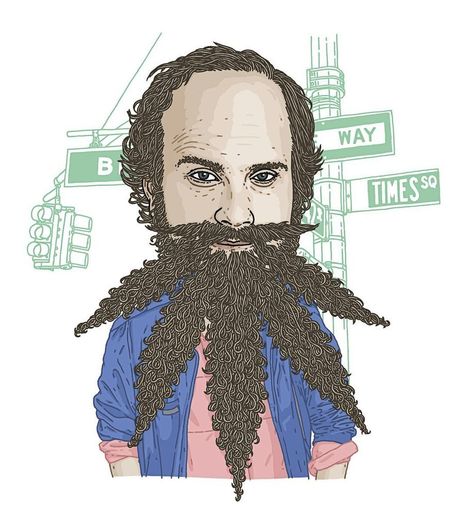



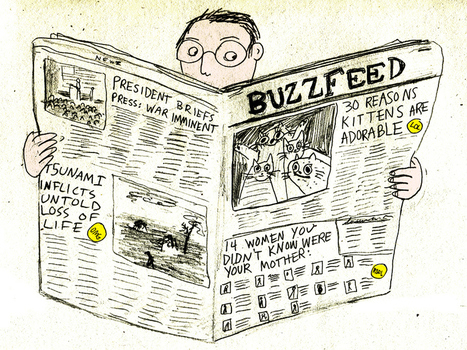



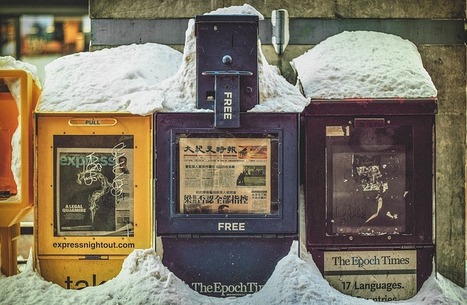
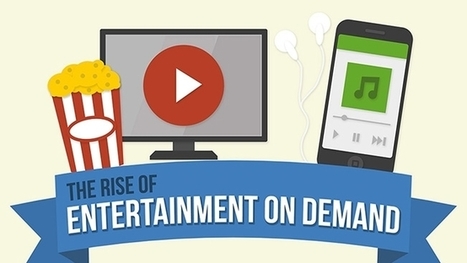

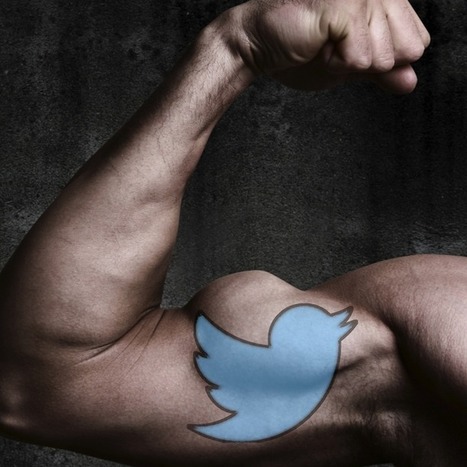
![Why I Need Aereo TV — And You Do, Too [Review] | ReadWrite | Public Relations & Social Marketing Insight | Scoop.it](https://img.scoop.it/nGaingPsnXmY8PuUyoHDPzl72eJkfbmt4t8yenImKBVvK0kTmF0xjctABnaLJIm9)

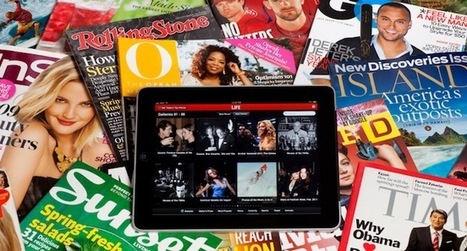






President Trump has labeled a slew of media companies, including the New York Times and CNN, as 'failing,' Here's a look at how they are really performing. Just the facts!